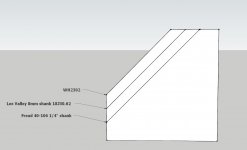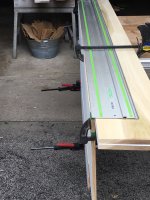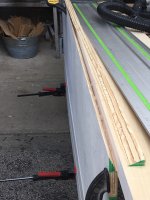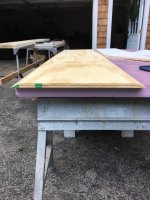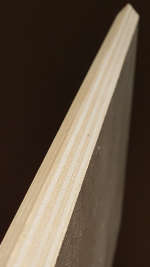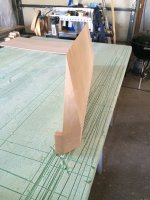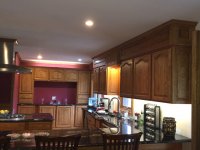I need to pick up a large chamfer bit and these are looking like my best options.
Lee Valley 1 5/8" Chamfer Bit – 8mm shank - 18J30.62
Freud 1-3/4″ Chamfer - 1/4" shank - 40-106
The Lee Valley bit I wouldn't worry about at all with the slightly smaller size and 8mm shank.
The Freud is larger than anything Whitseside or Lee Valley offer in a 1/4" shank. Is the size anything to worry about in regard to performance compromise? If not then obviously it's the more versatile bit since I can just as easily cut the same chamfer size of the Lee Valley. Do I need to worry about making multiple passes at different heights on softwood lumber or just go slowly? Any RPM recommendations?
I'm mostly cutting softwood lumber, with the occasional baltic birch.
Here's how the max chamfer cuts compare on 3/4" stock:
Lee Valley 1 5/8" Chamfer Bit – 8mm shank - 18J30.62
Freud 1-3/4″ Chamfer - 1/4" shank - 40-106
The Lee Valley bit I wouldn't worry about at all with the slightly smaller size and 8mm shank.
The Freud is larger than anything Whitseside or Lee Valley offer in a 1/4" shank. Is the size anything to worry about in regard to performance compromise? If not then obviously it's the more versatile bit since I can just as easily cut the same chamfer size of the Lee Valley. Do I need to worry about making multiple passes at different heights on softwood lumber or just go slowly? Any RPM recommendations?
I'm mostly cutting softwood lumber, with the occasional baltic birch.
Here's how the max chamfer cuts compare on 3/4" stock:

